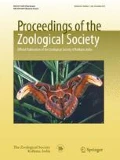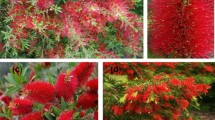Abstract
Bacterial disease is a growing threat to aquaculture. The use of commercial antibiotics in aquaculture increases antibiotic resistance among pathogenic bacteria in exposed ecosystem and also creating environmental and public health hazards. As a consequence nowadays scientists are in search of alternate antibiotics. The use of Alliums by humans has a long history that can be traced back to the ancient Indians. Therefore, garlic-mediated synthesis of nanoparticles has garnered wide interest owing to its inherent features such as rapidity, simplicity, eco-friendliness and cheaper costs. This study deals with an environmentally friendly and biosynthesis process of antibacterial silver nanoparticles using an aqueous extract of Allium sativum. The formation and characterization of AgNPs was confirmed by scanning electron microscope and X-ray diffraction profile. Furthermore, the synthesized nanoparticles were examined against the pathogenic bacteria such as Pseudomonas aeruginosa PB112 (JN996498) and Bacillus licheniformis PKBMS16 (KX235179) infecting goldfish, Carassius auratus. From the experiment, it was found that the biologically synthesized nanoparticles by using A. sativum have a significant antibacterial activity and provide a scope for possible development of the formulations antimicrobial drug.
Graphical Abstract





Similar content being viewed by others
References
Adetumbi, M., G.T. Javor, and B.H. Lau. 1986. Allium sativum (garlic) inhibits lipid synthesis by Candida albicans. Antimicrobial Agents and Chemotherapy 30: 499–501.
Austin, B., and D.A. Austin. 1993. Bacterial fish pathogens. In Diseases of farmed and wildfish, 2nd ed, ed. S. Schuster Chichester, 111–117. Berlin: Springer.
Baker, J.T., R.P. Borris, B. Carte, G.A. Cordell, D.D. Soejarto, G.M. Cragg, M.P. Gupta, M.M. Iwu, D.R. Madulid, and V.E. Tyler. 1995. Natural product drug discovery and development: New perspective on international collaboration. Journal of Natural Products 58: 1325–1357.
Balamanikandan, T., S. Balaji, and J. Pandiarajan. 2015. Biological synthesis of silver nanoparticles by using onion (Allium cepa) extract and their antibacterial and antifungal activity. World Applied Sciences Journal 33 (6): 939–943.
Buszewski, B., V.R. Plugaru, P. Pomastowski, K. Rafinska, M. Szultka-Mlynska, P. Golinska, M. Wypij, D. Laskowski, and H. Dahm. 2016. Antimicrobial activity of biosilver nanoparticles produced by a novel Streptacidiphilus durhamensis strain. Journal of Microbiology, Immunology, and Infection. https://doi.org/10.1016/j.jmii.2016.03.002.
Caruana, S., G.H. Yoon, M.A. Freeman, J.A. Mackie, and A.P. Shinn. 2012. The efficacy of selected plant extracts and bioflavonoids in controlling infections of Saprolegnia australis (saprolegniales; oomycetes). Aquaculture 358: 146–154.
Citarasu, T., M.M. Babu, R.J.R. Sekar, and P.M. Marian. 2002. Developing artemia enriched herbal diet for producing quality larvae in Penaeus monodon fabricius. Asian Fisheries Sciences 15: 21–32.
El Deen, A.I.N., and A.M. Razin. 2009. Application of some medicinal Plants to eliminate Trichodina sp. in tilapia (Oreochromis niloticus). Report Opinion Journal 1 (6): 1–5.
European Commission. 2008. Background information on the consultation process on monitoring International Trade in Ornamental Fish, http://www.ornamental-fishint.org/uploads/M6/Q6/M6Q6bR8R4fxaZ8fa0nJqjA/UNEP-WCMC-Background.pdf. Accessed 18 July 2012.
Geethalakshmi, R., and D.V.L. Sarada. 2012. Gold and silver nanoparticles from Trianthema decandra: Synthesis, characterization, and antimicrobial properties. International Journal of Nanomedicine 7: 5375–5384.
Ghorbani, H.R., and S. Soltani. 2015. Antibacterial effects of silver nanoparticles on Escherichia coli and Bacillus subtilis. Oriental Journal of Chemistry 31 (1): 341–344.
Ghosh, S., Saha, M., P.K. Bandyopadhyay, and M. Jana. 2017. Extraction, isolation and characterization of bioactive compounds from chloroform extract of Carica papaya seed and it’s in vivo antibacterial potentiality in Channa punctatus against Klebsiella PKBSG14. Microbial Pathogenesis 111:508–518. doi:https://doi.org/10.1016/j.micpath.2017.08.033.
Harris, J.C., S.L. Cottrell, S. Plummer, and D. Lloyd. 2001. Antimicrobial properties of Allium sativum (garlic). Applied Microbiology and Biotechnology 57: 282–286.
Kathireswari, P., S. Gomathi, and K. Saminathan. 2014. Plant leaf mediated synthesis of silver nanoparticles using Phyllanthus niruri and its antimicrobial activity against multi drug resistant human pathogens. International Journal of Current Microbiology and Applied Sciences 3 (3): 960–968.
Krupa, A.N.D., and V. Raghavan. 2014. Biosynthesis of silver nanoparticles using Aegle marmelos (Bael) fruit extract and its application to prevent adhesion of bacteria: A strategy to control microfouling. Bioinorganic Chemistry and Applications. https://doi.org/10.1155/2014/949538.
Mikail, H.G. 2010. Phytochemical screening, elemental analysis and acute toxicity of aqueous extract of Allium sativum L. bulbs in experimental rabbits. Journal of Medicinal Plants Research 4: 322–326.
Novotny, L., L. Dovorska, A. Lorenkova, V. Beran, and I. Pavlik. 2004. Fish: A potential source of bacterial pathogens for human beings. Veterinary Medicine in Czech 49 (9): 343–358.
Patil, S.V., H.P. Borase, C.D. Patil, and B.K. Salunke. 2012. Biosynthesis of silver nanoparticles using latex from few euphorbian plants and their antimicrobial potential. Applied Biochemistry and Biotechnology 167: 776–790.
Raja, S., V. Ramesh, and V. Thivaharan. 2017. Green biosynthesis of silver nanoparticles using Calliandra haematocephala leaf extract, their antibacterial activity and hydrogen peroxide sensing capability. Arabian Journal of Chemistry 10: 253–261.
Rastogi, L., and J. Arunachalam. 2011. Sunlight based irradiation strategy for rapid green synthesis of highly stable silver nanoparticles using aqueous garlic (Allium sativum) extract and their antibacterial potential. Materials Chemistry and Physics 129: 558–563.
Ress, L.P., S.F. Minney, N.J. Plummer, J.H. Slatter, and D.A. Skyrme. 1993. A quantitative assessment of the antimicrobial activity of garlic (Allium sativum). World Journal of Microbiology & Biotechnology 9: 303–307.
Saha, M., and P.K. Bandyopadhyay. 2017. Phytochemical screening for identification of bioactive compound and antiprotozoan activity of fresh garlic bulb over trichodinid ciliates affecting ornamental goldfish. Aquaculture 473: 181–190.
Saha, M., Mondal, S., and P.K. Bandyopadhyay. 2017. In- vitro efficacy of phytochemicals against Trichodinid ciliates infecting ornamental goldfish, Carassius auratus. International Journal of Pharma and Biosciences 8(1):(B) 196–201.
Shankar, S.S., A. Ahmad, R. Parsricha, and M. Sastry. 2003. Bioreduction of chloroaurate ions by geranium leaves and its endophytic fungus yields gold nanoparticles of different shapes. Journal of Materials Chemistry 13: 1822.
Shankar, S.S., A. Rai, A. Ahmad, and M. Sastry. 2004. Rapid synthesis of Au, Ag, and bimetallic Au core Ag shell nanoparticles using Neem (Azadirachta indica) leaf broth. Journal of Colloid and Interface Science 275: 496–502.
Sondi, I., and B. Salopek-Sondi. 2004. Silver nanoparticles as antimicrobial agent: a case study on E. coli as a model for Gram-negative bacteria. Journal of Colloid and Interface Science 275: 177–182.
Stuffness, M., and J. Douros. 1982. Current status of the NCI plant and animal product programme. Journal of Natural Products 45: 1–14.
Suman, T.Y., S.R.R. Rajasree, A. Kanchana, and S.B. Elizabeth. 2013. Biosynthesis, characterization and cytotoxic effect of plant mediated silver nanoparticles using Morinda citrifolia root extract. Colloids and Surfaces B: Biointerfaces 106: 74–78.
Tamboli, D.P., and D.S. Lee. 2013. Mechanistic antimicrobial approach of extracellularly synthesised silver nanoparticles against gram positive and gram negative bacteria. Journal of Hazardous Materials 260: 878–884.
Vijayakumar, M., K. Priya, F.T. Nancy, A. Noorlidah, and A.B.A. Ahmed. 2013. Biosynthesis, characterisation and anti-bacterial effect of plant-mediated silver nanoparticles using Artemisia nilagirica. Industrial Crops and Products 41: 235–240.
White, G.V., P. Kerscher, R.M. Brown, J.D. Morella, W.M. Allister, D. Dean, and C.L. Kitchens. 2012. Green synthesis of robust, biocompatible silver nanoparticles using garlic extract. Journal of Nanomaterials. https://doi.org/10.1155/2012/730746.
Acknowledgements
Authors are thankful to the Department of Zoology, University of Kalyani, Kalyani for providing the laboratory facilities. Sincere thanks are also due to the Centre for research of Nanoscience and Nanotechnology, University of Calcutta, Salt Lake City, Kolkata-91 for technical support during SEM study of the parasites.
Funding
One of the authors (MS) is thankful to the University Grants Commission, New Delhi for financial support under Special Assistance Program No. F-3-11/2012(SAP-II).
Author information
Authors and Affiliations
Corresponding author
Ethics declarations
Conflict of interest
The authors declared that they have no conflicts of interest.
Ethical Approval
The fishes were collected form different ornamental fish farms of West Bengal.
Rights and permissions
About this article
Cite this article
Saha, M., Bandyopadhyay, P.K. Green Biosynthesis of Silver Nanoparticle Using Garlic, Allium sativum with Reference to Its Antimicrobial Activity Against the Pathogenic Strain of Bacillus sp. and Pseudomonas sp. Infecting Goldfish, Carassius auratus. Proc Zool Soc 72, 180–186 (2019). https://doi.org/10.1007/s12595-017-0258-3
Received:
Revised:
Accepted:
Published:
Issue Date:
DOI: https://doi.org/10.1007/s12595-017-0258-3




